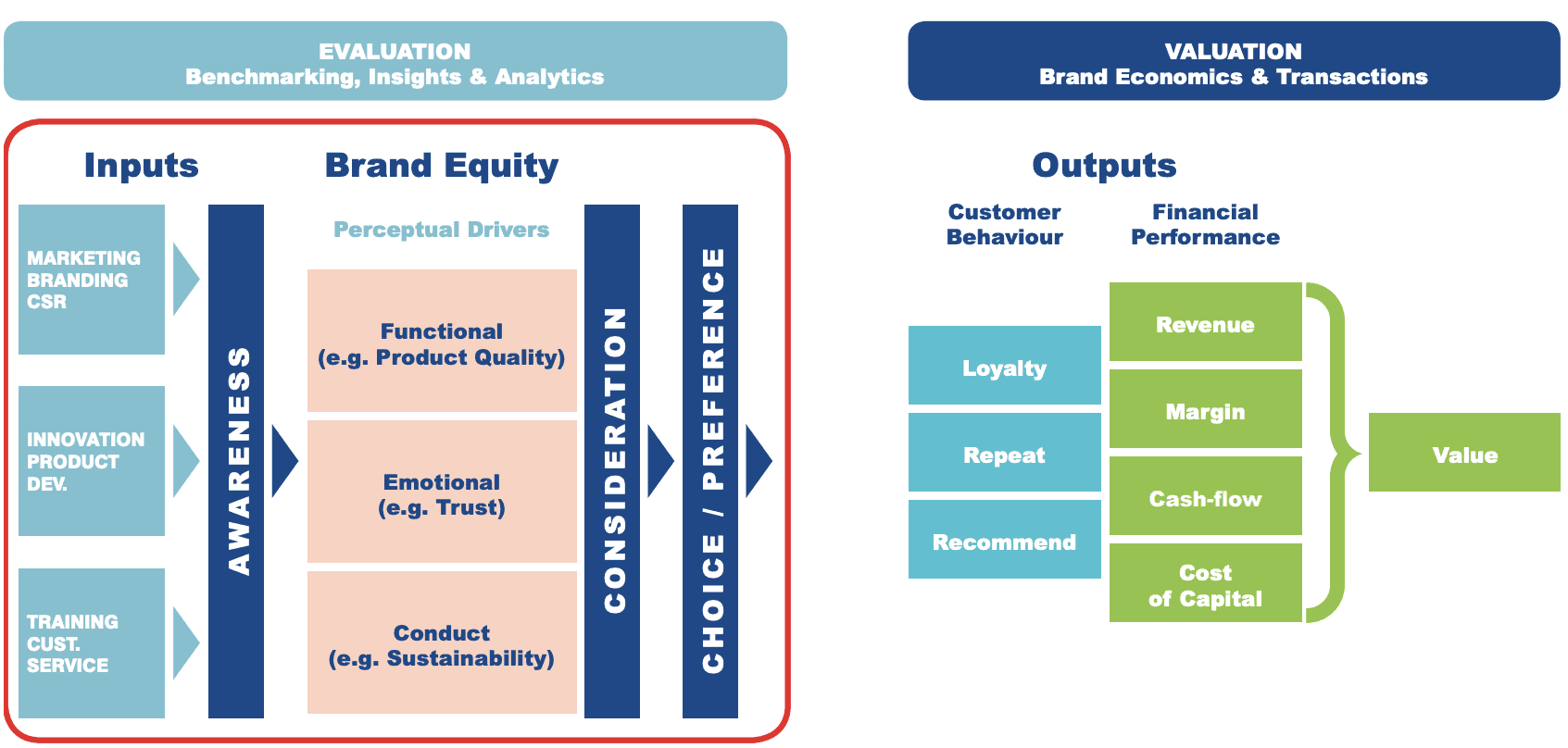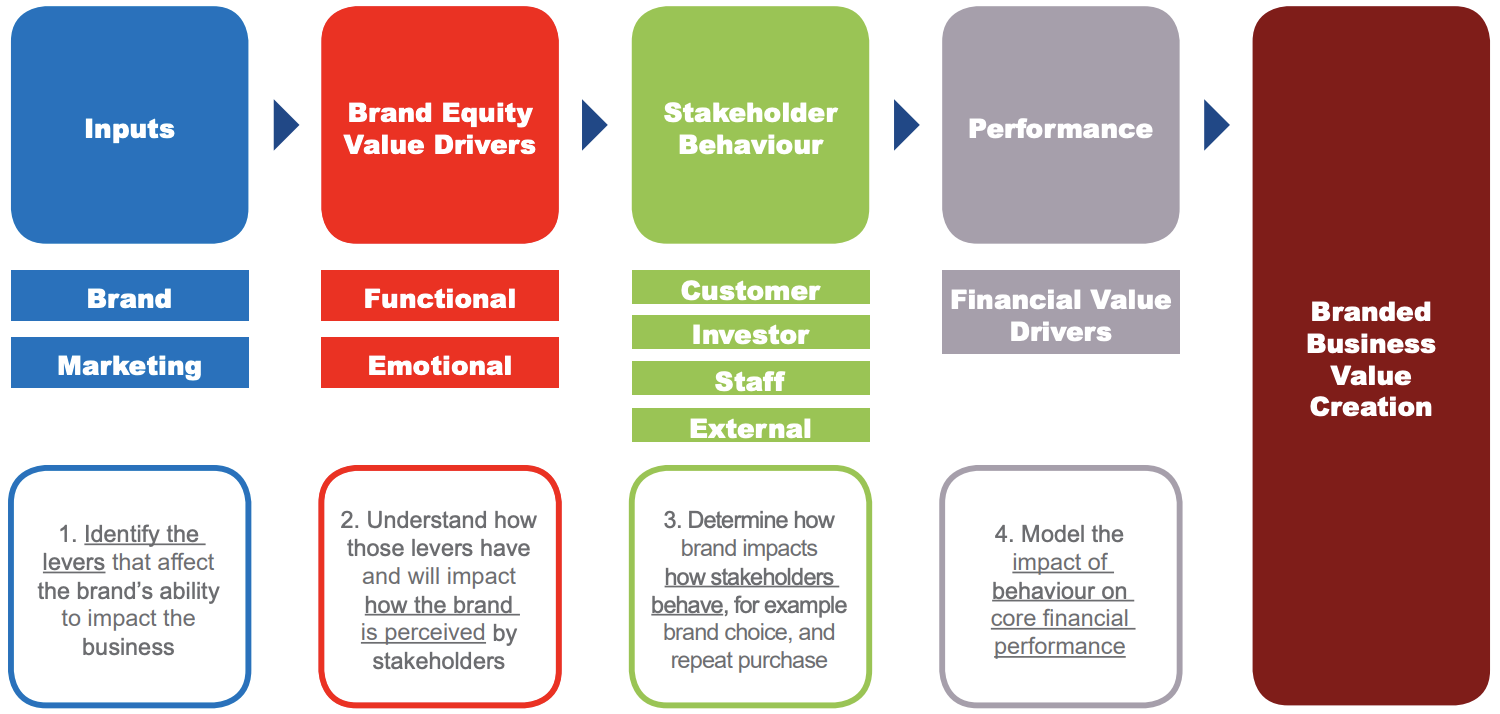Brands drive business growth, profitability and customer loyalty, and allow businesses to distinguish themselves from competitors. It is best practice to include rigour and structure when measuring the strength of your brand. This is why we accord with ISO 20671, the international standard on brand evaluation.
The importance of managing brands and evaluating their progress and future prospects has been recognised since the early days of branding. Procter & Gamble, the originators of the brand management function, recognised the need for rigorous and continuous assessment of their brands' performance as far back as 1931:
"Examine carefully the combination of effort that seems to be clicking and try to apply this treatment to other territories that are comparable".
Neil McElroy, Former P&G President in his famous three-page memo. 1
Other big brand owners soon followed suit. Brands and branding have such a crucial role in business success, so a process of brand evaluation is essential. However, while most larger companies conduct some sort of brand evaluation, the scale and sophistication of the practice differ wildly. Some companies under-track, some over-track, some track inappropriate things that have no relevance for improving business performance.
What is measured is managed. See our consulting services to find out more about what we do to help teams understand the strength and value of their brands.
What Is Brand Evaluation?
Before we get into the nitty-gritty, we should set out our guiding principles when setting out to evaluate our brand. Fit-for-purpose brand assessments deliver:
- Data that are relevant to improving business performance.
- Are delivered in a timely fashion.
- Are produced for an audience that can act on the information.
Brand evaluation is the measurement of the strength of a brand. In laymen’s terms, how ‘good’ the brand is and the impact it has on stakeholders’ actions, whether to buy the product, what price to pay, whether to work for an organisation, etc...
Brand evaluation is also an input into brand valuation, which focuses on the monetary value of a brand and its commercial worth to a company as a transferable and income-generating asset. The evaluation takes into account non-financial considerations as well as obvious factors such as sales, profit, and ROI.
However, the two concepts are inherently linked – some kind of evaluation is required as part of a brand valuation exercise. In turn, brand evaluation should track brand performance on dimensions which link directly or indirectly to commercial performance and are not ‘vanity metrics’.
Our conceptual framework for brand evaluation is intended to identify the links between actions/investments and the awareness, perceptions, and stakeholder behaviour that they cause. While the levers, as well as the drivers of brand preference, differ by sector, the overarching idea is seen in this graph.

Diagnostic and holistic evaluation programmes should use a range of relevant indicators to assess:
- The overall strength and reputation of the brand.
- Strong and weak aspects of the brand.
- How the brand is responding to marketing activities, e.g. advertising.
- The impact of the brand on the actions of customers and other stakeholders.
- Why the brand is evolving in the ways observed.
Naturally, any evaluation will generally be in some sort of competitive context - many of the key measures are only insightful when compared with other brands. Even organisations with few or no direct competitors (e.g. a state-monopoly energy provider) will still wish to benchmark in some way, and in any case, will be competing with others on some level (e.g. with other large organisations for talent/employees).
Brand evaluation is not a precise science. Some aspects of good practice are universal, and general principles of measurement can be applied in virtually all situations. But every brand and organisation is different, and brand owners should seek to adopt this broad evaluation framework to meet their specific needs. There is no one-size-fits-all solution, which can be a challenge for organisations which lack sufficient internal resource and expertise to design and manage evaluation programmes.
Finally, evaluation can contain both qualitative and quantitative assessments, and best practice combines both. A purely qualitative assessment can be problematic – such programmes are always open to challenge by appearing to be more subjective – and more sophisticated ROI analysis is impossible without a degree of quantification. Hence to all intents and purposes, evaluation is largely a quantitative discipline.
Setting up a Brand Evaluation Framework
Brand evaluation programmes only deliver real value to an organisation if they provide a measurement framework which allows performance to be tracked with reasonable accuracy and confidence. Evaluation should never be ad-hoc or designed on a whim – brand owners must think carefully about what they are measuring and why.
Best practice in brand evaluation begins with a clear sense of the different measures required. At this stage, some brand owners focus on what might be termed equity measures – e.g. whether stakeholders know and like the brand. But input measures should also be considered – e.g. how well is this brand supported in the media? or what is its innovation spend? – as well as output measures which reveal how customers are behaving and what impact their behaviour has on the business.
Tracking these groups of data and establishing an understanding of how each element links and influences the others helps to form the core of value-based brand management systems that can identify the return on investment of specific brand-related actions.

A basic understanding of how brands drive commercial outcomes, and how brands themselves succeed should underpin any evaluation framework. In particular, a knowledge of some of the fundamental principles of brand growth is helpful when designing an evaluation framework, and especially when choosing which measures to track.
Although many of the more commonly-used measures have been validated to have an impact on sales or market share, some brand owners struggle to quantify the precise relationships (and in turn to understand which measures have the biggest commercial impact and should be prioritised in ongoing evaluation).
Such linkages can be determined via sophisticated analysis conducted internally or via external modellers. However, to do so requires sufficient data covering all relevant inputs and outputs. This underlines the need for rigour and consistency.
Brand Evaluation 101
Why Brand Evaluation Is An Important Management Practice
Measuring Brand Equity
The Brand Strength Index (BSI) - Our Brand Evaluation Process
- Aaker, D. and Joachimsthaler, E., 2000. Brand Leadership. New York: Free Press.[↩]
